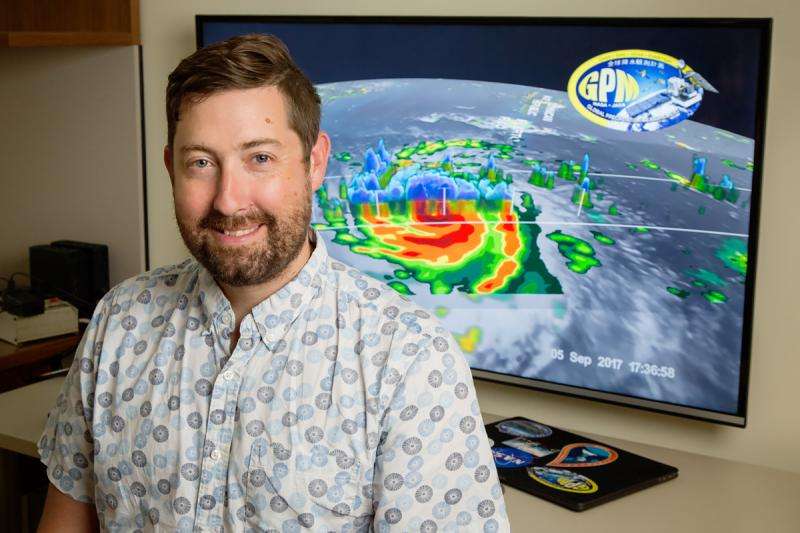Is the future of hurricane forecasting in danger?

Hurricane forecasting depends heavily on government-funded satellites, allowing the communities in their path to prepare and evacuate. Those satellites, monitored and maintained by the National Oceanic and Atmospheric Administration and NASA, require constant upkeep and frequent replacement. News Bureau physical sciences editor Lois Yoksoulian spoke with Illinois atmospheric sciences professor Steve Nesbitt about the future of the weather satellite program.
How are satellites used to inform hurricane forecasts?
Satellite data is used mainly for monitoring storms themselves, including clouds and rainfall within the system, as well as observing weather conditions outside of the storms. Both of these factors can give us information that can be used in the prediction of a storm's track, intensity and flooding potential.
Last year, NOAA launched the GOES-16 geostationary satellite. Geostationary satellites are placed in a high-altitude orbit (more than 35,000 kilometers) to provide continuous views of the same location on Earth. By contrast, low Earth orbit satellites are in a 400-900 kilometer orbit to gain higher spatial resolution for their sensors – the drawback being that atmospheric drag reduces low Earth orbit satellites' lifetime.
GOES-16 has greatly enhanced our ability to monitor storm structure, with continuous views of storms with time updates up to every 30 seconds and spatial resolution of about 500 meters. The GOES-16 satellite also has a continuous lightning sensor, which has never previously been available on a geostationary satellite. This information together has helped us monitor in detail the structure and intensity of recent storms such as Harvey, Irma, Maria and Jose, which has improved track and intensity forecasts.
Our research group has used low Earth orbit satellite data to show that when deep convection is enhanced in a tropical cyclone's eye, then rapid intensification of the storm is likely within 24-36 hours. We look forward to using sensors on GOES-16 and soon-to-be-launched GOES-17 to improve hurricane intensity predictions.
In 2012, the New York Times reported that the U.S. was lacking crucial weather satellite coverage because of low funding and mismanagement, which led to delays in launching replacements. That was five years ago; has anything changed?
The future of our weather satellite program is mixed, and uncertain going forward. Clearly the launch of GOES-16 has been a huge leap forward in monitoring hazardous weather. In terms of low Earth orbiting satellites, which typically have a lifetime of three to eight years and must be replaced, pressure from the scientific community allowed for NOAA's Joint Polar Satellite Program to proceed despite earlier program delays, and the first of two satellites in this series are set for launch later this year.
In its 2018 budget request, the Trump administration has sought to cut the next two satellites in NOAA Joint Polar Satellite Program, as well as another NASA satellite mission called PACE. Fortunately, Congress restored funding to the NOAA program, which will provide important temperature and humidity measurements and replace older, failing satellites. The future of the funding for the NASA satellite missions remain uncertain.
On the positive side, NASA continues to support several missions that fund our research group: the Global Precipitation Measurement and Ocean Vector Winds missions, which continuously monitor tropical cyclone-related precipitation and winds, and TROPICS, which will study the internal structure of hurricanes with a constellation of 12 smaller satellites.
What will be the outcome if weather satellite missions continue to see budget cuts?
Satellite missions have a finite lifetime, so it takes constant planning and investment to maintain a fleet of operational and research satellites. Disruptions in funding caused by the 2013 U.S. government sequestration, recent proposed cuts to NOAA, and NASA's refocusing on space exploration over weather and climate science under the pressure of the Trump administration have left the future for hurricane-monitoring satellites in doubt.
Funding for Earth satellite measurements has demonstrable benefits in terms of protecting life and property, as well as improving our understanding of our planet. Without these satellites and the associated research at NASA and NOAA, which provide for the development for new satellite technology going forward, we risk reducing our capabilities for predicting weather hazard and other unforeseen risks to our national security that may be changing as the climate changes.
Provided by University of Illinois at Urbana-Champaign


















